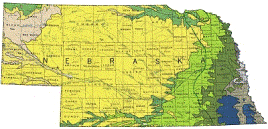US Geological Survey
Date of this Version
2004
Abstract
Little questions exists that the main bodies of North American prairie (i.e., the tall-grass, mixed, and shortgrass) are among the most endangered resources on the continent. The purpose of this paper is to provide a past and present biological base- line by which to understand North American prairies and to provide a platform for future conservation. Events both immediate to the end of the Pleistocene and historic suggest that the present grassland conditions are different from those within which most of the grassland organisms evolved. Our analysis suggests that few grassland landscapes remain adequate in area and distribution to sustain diversity sufficient to include biota and ecological drivers native to the landscape. A robust and history-based scenario to conserve Great Plains grasslands is to 1) identify areas large enough to sustain an ecological system with all its biodiversity, 2) reverse significant losses in area of native grasslands, 3) ensure that restoration matches the grassland previously existing at that site, 4) refocus the profession of range management, and 5) establish a more meaningful agency design for grassland and natural resource management.


Comments
Published in Wildlife Society Bulletin 2004, 32(1):6-15.